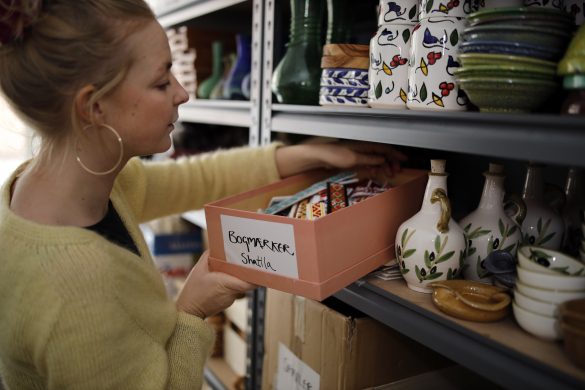New World Bank Book Explores How to Empower the Poor (det nærmest uoversættelige ord empower(ment) benævnes i Gyldendals røde ordbøger som bemyndige, sætte i stand til, give evne til)
It is widely accepted that effective poverty reduction depends on the ability to empower poor people to move out of poverty, yet the concept of empowerment tends to be poorly understood in development circles.
A new book released Wednesday by the World Bank – Measuring Empowerment: Cross Disciplinary Perspectives – explores various aspects of empowerment and its relationship to poverty reduction.
The book brings together the research and experience of 27 development experts from different disciplines who were asked to address the question of how best to define and measure empowerment.
The book is edited by Deepa Narayan, editor of the powerful three-part series Voices of the Poor, which chronicled the first-hand accounts of poverty from 60.000 poor men and women from developing countries.
– We know that empowering the poor is essential to poverty reduction, said Ms. Narayan adding: – But can a computer empower an illiterate farmer? This book seeks to answer the key questions of how poor people can be empowered to move out of poverty and how to measure whether these goals have been reached.
Studies in this book tackle a range of issues with great academic rigor, while maintaining the “real-world” relevance of each question addressed. Building on the work of the 27 authors, the books presents three key ideas:
– Inequality in power is pervasive (vidt udbredt) and embedded in institutions from the local to global levels. Therefore, changes in the opportunity structure dictated by formal and informal rules are critical.
– Unlike the rich, poor people are less able to take action to bring about change on their own behalf. As a result, organizations of the poor, as well as organizations and communication technologies that link poor people to resources outside their own groups, are critical.
– Differences between social groups are often more relevant to development and empowerment questions than individual differences. However, most research and measurement efforts focus on individuals.
The book builds a framework to ensure that empowerment becomes part of the development agenda so that the poor are treated as invaluable partners in development, and are finally treated as a resource and not the problem.
– We hope that this book, with its focus on measuring empowerment, will help spread approaches to poverty reduction that empower poor people, said World Bank President James D. Wolfensohn adding: – Unless poor people are at the center of poverty reduction, policy making and program design will not benefit them.
Empowerment in Action
A striking example of how technology can empower poor farmers in India:
Farmers in India, as in many other parts of the world, are isolated from urban markets and dependent on middlemen, who monopolize information, sale of inputs, and crop purchasing.
As a result of an innovative idea and funding from ITC, an Indian private sector company, which has a growing involvement in agribusiness trade, more than 2 million Indian farmers are now connecting to markets through village-based computer stations called e-choupals.
Choupal is the Hindi word for the village square, a place where elders meet. E-choupals use information technology to bring about virtual meetings between farmers, buyers, and suppliers. ITC installs each Internet access kiosk, powered by solar-charged batteries, in the house of a farmer who is trained to operate it.
Local farmers use the computer to access information free of charge. After checking prices, they can choose to buy or sell through ITC or go to local markets instead. ITC pays the kiosk operator 5 rupees on each completed transaction, whether purchase of inputs or sale of produce. Efficiency improvements in buying and selling have led to increased revenues for both farmers and ITC.
By providing easy access to information and increasing transparency, e-choupals have helped to change the relationship between farmers and their buyers and suppliers from one of exploitation and dependence to one of respect, trust, fairness, and equity.
The e-choupal system brings people together across social barriers for business, newspaper reading, or watching movies on farming techniques.
The results are impressive. Within four years, the e-choupal network has spread to 30.000 villages and has 37 active partners, including companies, nongovernmental organizations, universities, and state governments.
By 2004 ITC was adding 30 new villages a day. All this has been achieved without any change in government policy and or any attempt to create new farmers organizations.
This experience shows how strategic changes in the institutional climate-that is, in the rules, resources, norms, behaviors, processes, and trust that govern the relationships between farmers and private companies-can quickly create incentives that lead to greater empowerment and increased incomes.
These benefits can be achieved without changes in government rules and regulations, without direct intervention in longer-term processes of changing social and political structures, and without first increasing the collective and individual assets of poor people.
Kilde: www.worldbank.org














